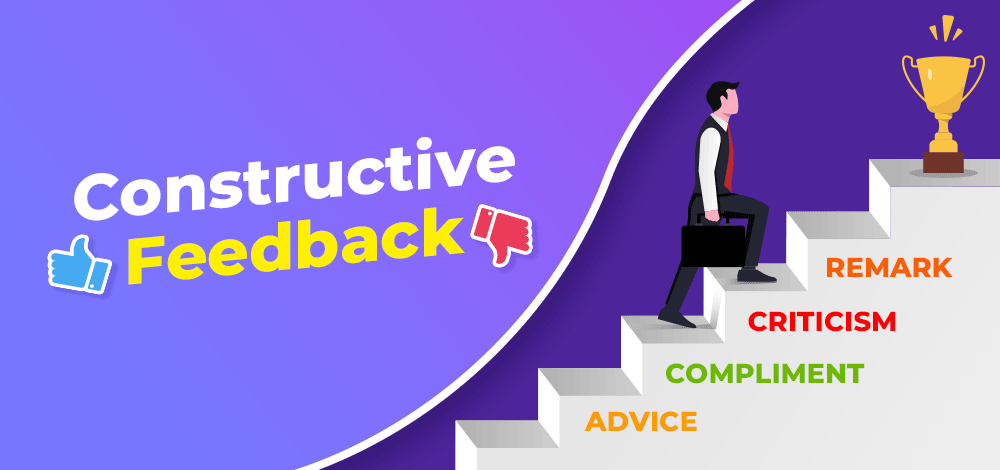Designing with Intelligence: How Feedback Becomes the Engine of Creative Innovation in Software Teams

Discover how Intelligent Feedback in Software Design transforms creativity into measurable innovation. Learn how AI, data, and collaboration turn feedback into the engine that powers modern software teams.
-
Introduction — The Symbiosis of Creativity and Computation
-
The New Language of Feedback: From Subjectivity to Intelligence
-
Human Creativity Meets Machine Precision
-
The Architecture of Intelligent Feedback Loops
-
AI-Powered Critique and Auto-Suggestion Systems
-
Collaborative Design Thinking in Global Software Teams
-
Turning Creative Intuition into Measurable Insight
-
Leadership Perspective: Feedback as a Strategic Asset
-
The Psychological Dimension of Feedback Intelligence
-
The Future of Feedback: Designing with Autonomous Intelligence
-
Conclusion — Feedback as the DNA of Innovation
Designing with Intelligence: 7 Ways Intelligent Feedback in Software Design Drives Creative Innovation
Introduction — The Symbiosis of Creativity and Computation
In today’s software landscape, intelligent feedback in software design has become the bridge between human creativity and computational precision. No longer a passive critique process, feedback now operates as a continuous, data-driven loop that accelerates design quality and innovation velocity.
Introduction: The Symbiosis of Creativity and Computation
In the modern software landscape, creativity no longer exists in isolation — it thrives through collaboration, intelligence, and iteration. As technology reshapes every facet of digital design, the way teams approach feedback has transformed from a reactive task into a proactive engine of innovation. What once served as a series of design reviews or critique sessions has evolved into a system of intelligent feedback loops, powered by artificial intelligence, cloud collaboration, and data-driven precision.
In the new era of creative engineering, feedback is not just commentary — it is computation. It transforms raw design energy into structured innovation. Whether refining a product interface, enhancing a visual asset, or crafting a poster campaign, feedback sits at the intersection of human emotion and machine intelligence. It is here that creative intuition meets algorithmic accuracy — producing outputs that are not only visually stunning but also strategically aligned and technically sound.
For global software teams, this evolution is not optional. It is an imperative. In an age where design excellence equates to brand credibility, the ability to generate, analyze, and apply intelligent feedback is what distinguishes forward-thinking enterprises from stagnant organizations.
The New Language of Feedback: From Subjectivity to Intelligence
Traditional feedback relied heavily on subjective perception. Designers presented; reviewers critiqued. While this model worked in limited creative settings, it struggled to scale across global, cross-functional software teams. Subjective opinions led to inconsistent quality, communication breakdowns, and lost creative momentum.
Today, the language of feedback has changed. AI-driven design systems such as Figma AI, Wizard, and Adobe Sensei have introduced machine intelligence into creative review processes. Instead of vague directives — “make it more engaging” or “this color feels off” — teams now receive actionable insights like contrast ratios, layout balance, or engagement probability. Feedback has become quantifiable, measurable, and strategic.
Machine-learning algorithms can now analyze thousands of design variations and predict which visual elements will perform best based on historical engagement patterns. In essence, AI doesn’t replace creative judgment — it amplifies it. The feedback is no longer a critique but a computational compass that guides teams toward data-backed design decisions.
Human Creativity Meets Machine Precision
Software development has always balanced art and logic — the fusion of intuitive creativity with structured engineering. The emergence of AI-powered feedback tools represents a monumental step toward harmonizing these two forces. Designers bring emotional intelligence — the ability to understand narrative, mood, and user psychology. Machines contribute computational intelligence — the ability to detect inefficiencies, predict behavior, and optimize output.
In modern creative ecosystems, feedback bridges this duality. When designers iterate on a layout, AI systems continuously evaluate pixel density, hierarchy, and alignment. When copywriters refine a headline, natural language models analyze tone, sentiment, and clarity. Every suggestion, every revision, becomes part of a continuous feedback cycle that merges emotional intent with algorithmic precision.
This convergence gives rise to what can be called creative intelligence — the discipline of using feedback as both an emotional and analytical force. For software teams, it represents a paradigm where every product iteration is smarter, more resonant, and more aligned with user expectations than the last.
The Architecture of Intelligent Feedback Loops
To understand how feedback fuels creative innovation, it’s essential to examine its architecture — the systemic structure through which insights are collected, processed, and applied. The modern feedback loop operates across three interconnected layers:
- Collection (The Observation Layer)
- Feedback begins with observation. Designers gather responses from stakeholders, analytics platforms, or AI evaluators. Every user click, every design comment, and every performance metric becomes a data point in the creative continuum.
- Interpretation (The Intelligence Layer)
- Here, raw feedback is transformed into structured meaning. Machine learning systems cluster similar insights, identify recurring issues, and prioritize the feedback based on measurable impact. It is where data becomes direction.
- Application (The Creation Layer)
- Finally, teams apply these insights through iterative design. Prototypes evolve, visuals adapt, and code adjusts to align with the intelligence gathered. The result is a continuously learning creative system — one that improves not by chance but by design.
This model doesn’t just streamline communication — it institutionalizes intelligence. Each iteration makes the creative engine sharper, faster, and more predictive.
AI-Powered Critique and Auto-Suggestion Systems

One of the most transformative aspects of intelligent feedback lies in AI-powered critique engines. These systems analyze design elements and automatically suggest improvements — from accessibility enhancements to aesthetic refinements.
For instance:
- AI color analysis tools ensure visual accessibility compliance by recommending high-contrast palettes.
- Typography engines evaluate readability across devices, adjusting font weights dynamically.
- Layout algorithms analyze balance, symmetry, and whitespace, offering composition alternatives based on engagement analytics.
Even emotion-aware AI models can assess how users might feel about a particular color scheme or visual tone. Combined, these systems turn feedback into a real-time design assistant — available 24/7, scalable across time zones, and free from bias or fatigue.
When designers interact with such systems, they’re not merely receiving criticism; they’re engaging in a dialogue with intelligence. The process nurtures creativity while ensuring precision — allowing teams to move beyond guesswork and toward purposeful design excellence.
Collaborative Design Thinking in Global Software Teams
Feedback is also the foundation of collaborative intelligence — the ability of distributed teams to co-create seamlessly. In global software organizations, design teams often span continents and time zones. Without structured, intelligent feedback, creativity risks becoming fragmented.
Platforms like Figma, Miro, Notion, and Asana have redefined how collaboration occurs, embedding feedback mechanisms directly into design workflows. Comments, suggestions, and version histories are all synchronized in real time. When integrated with AI, these platforms can even predict potential conflicts, prioritize revisions, and generate visual summaries of consensus trends.
The outcome is not just faster iteration but shared creative ownership. Every stakeholder — from product managers to developers — contributes insights without disrupting the design flow. Feedback becomes a collective intelligence system, harmonizing diverse perspectives into a unified creative vision.
This democratization of feedback also reinforces psychological safety — a crucial aspect of innovation culture. When designers feel their ideas are acknowledged, refined, and valued through structured feedback, creative confidence soars. And confident teams create exceptional work.
Turning Creative Intuition into Measurable Insight
For years, creativity has been considered an abstract art — something difficult to measure or quantify. But intelligent feedback loops are changing that narrative. Through data analytics, sentiment analysis, and user testing, teams can now translate creative intuition into measurable insight.
Consider the following examples:
- User Behavior Analytics: AI feedback loops capture how audiences interact with visual content, identifying where attention flows and where it drops off.
- A/B Testing at Scale: Automated testing platforms compare multiple creative variations in real-time, delivering quantitative evidence for design decisions.
- Sentiment Mapping: Natural language models analyze user feedback, comments, and reactions to gauge emotional resonance.
These insights don’t diminish creativity — they validate it. Designers can now defend their aesthetic choices with evidence-backed metrics. Creative success becomes both an art and a science.
Leadership Perspective: Feedback as a Strategic Asset
From a leadership standpoint, feedback is no longer a design utility; it is a strategic differentiator. C-level executives in technology firms increasingly recognize that design quality, team collaboration, and innovation velocity directly correlate with how feedback is managed.
Intelligent feedback systems embody the principles of continuous improvement — the same philosophy that drives agile development and DevOps. When leaders integrate AI-driven feedback into design operations, they unlock measurable benefits:
- Faster product iteration cycles
- Higher design consistency across teams
- Increased employee satisfaction and retention
- Improved brand perception through visual coherence
Strategic leaders treat feedback as an asset class — an investment that compounds in creative value over time. Each iteration becomes smarter, each campaign more refined, and each interaction more meaningful.
The Psychological Dimension of Feedback Intelligence
Beneath the technology lies an equally vital human element — the psychology of feedback. In software teams, the emotional climate surrounding critique can determine whether feedback fosters innovation or resistance.
Intelligent feedback systems help neutralize bias, depersonalize critique, and maintain objectivity. When insights are data-driven and system-generated, they shift focus from who said it to what can be improved. This balance between empathy and evidence cultivates a growth mindset culture — one that prizes progress over perfection.
Moreover, AI tools can assist in moderating tone and sentiment in written feedback. They ensure comments are constructive, inclusive, and motivational, fostering a psychologically safe creative space. Over time, this nurtures resilience, adaptability, and shared accountability across global teams.
The Future of Feedback: Designing with Autonomous Intelligence

As AI evolves, feedback loops will become increasingly autonomous — capable of self-optimization without constant human intervention. Imagine a near future where design systems continuously learn from user data, self-adjust visual parameters, and autonomously recommend creative updates.
These autonomous feedback systems won’t replace human designers; they will extend their intelligence. They will act as creative copilots — continuously monitoring design performance and suggesting innovations aligned with evolving brand narratives.
This future is not science fiction — it’s already emerging in advanced creative ecosystems. As design and development converge under AI-driven architectures, the ability to design with intelligence — not just talent — will define the creative leaders of tomorrow.
Conclusion: Feedback as the DNA of Innovation
In every masterpiece of digital design lies a trail of feedback — insights refined, ideas reshaped, and details perfected. Feedback is not merely a stage in the creative process; it is the DNA of innovation itself.
In the software industry, where technology evolves faster than ideas can mature, intelligent feedback ensures continuity, quality, and evolution. It transforms scattered inspiration into strategic excellence. It bridges the human imagination with computational rigor — creating a future where design is intelligent, collaboration is seamless, and creativity is measurable.


